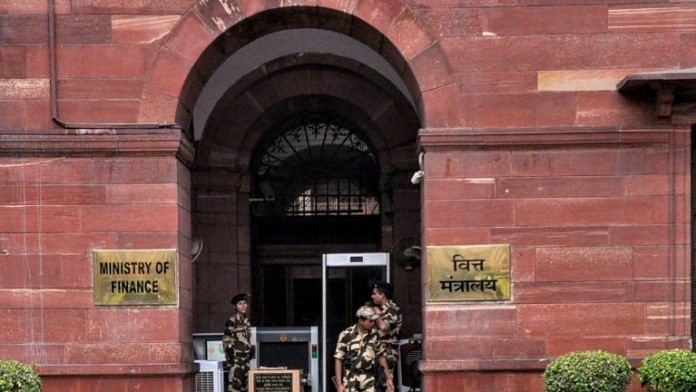New Delhi: Just before Diwali week, the Narendra Modi government announced significant reforms in its public procurement policy, which went largely unnoticed.
Aiming to ensure quality work and keep time and cost overruns in check, the finance ministry on 29 October issued general instructions on procurement and project management, which have expanded the ambit of selecting bidders for executing government projects, and procuring goods and services in ministries and government offices.
According to the revised guidelines, L1 or Least Cost Selection Method, will no longer be the only tendering format for selecting bidders for executing projects. L1 was so far the preferred method used by ministries, public agencies and public sector undertakings (PSUs) for selecting lowest bidders to carry out standard or routine works/non-consultancy services like audit and engineering design of non-complex works.
The guidelines issued by the Department of Expenditure’s Public Procurement division have now allowed the selection of bidders for works and non-consultancy services through alternative procurement methods like the Quality-cum-Cost Based Selection (QCBS).
So far, under the General Financial Rules, 2017, which government agencies and ministries had to follow while dealing with matters involving public finances, QCBS was used only for procurement in cases where the quality of consultancy services is of prime concern. Two other additional methods of procurement — L1 and Single Source Selection — were also recommended in GFR 2017.
The revised guidelines have suggested a fourth method — Fixed Budget Based Selection — for selection/evaluation of consultancy proposals. Under this method, the cost of consulting services shall be specified as a fixed budget in the tender document itself.
Also read: Modi govt plans national policy framework for Swiss Challenge system of public procurement
How is QCBS different from L1?
In the L1 system, a bidder is selected only on the basis of the lowest cost committed to complete the work. There is no weightage for technical score in the final evaluation and the responsive technically qualified proposal with the lowest evaluated cost is selected.
Unlike L1, QCBS evaluates a bidder based on a combination of technical and quality scores. However, the maximum weightage for non-financial parameters should not exceed 30 per cent.
The revised guidelines allow procurement agencies to use QCBS where the procurement has been “declared to be a quality oriented procedure by the competent authority” and where the estimated value of procurement does not exceed Rs 10 crore.
QCBS is the preferred mode for international competitive bidding. According to a finance ministry toolkit prepared for improving the Public-Private Partnership decision-making process, QCBS is used for selecting bidders for transport infrastructure projects, roads, etc. where the bidder possesses both technical skills and is competent.
Why was the public procurement policy revised?
The need to revise the public procurement strategy was felt after different agencies including the Central Vigilance Commission (CVC), Comptroller and Auditor General (CAG), and NITI Aayog flagged concerns that the L1 system is not the most effective when it comes to selecting bidders for products or services, especially for executing infrastructure projects, which require a high level of technical expertise.
The agencies felt that the L1 system could result in compromising the quality of work, delays and cost overruns, since the bidder is selected based on the lowest cost quoted.
The Economic Survey 2020-21 quotes a CVC concept note titled ‘Alternative Procurement Strategy for Award of Works and Goods Contract’, which states that “L1 may still hold good for procurement of routine works, goods and non-consulting services, but not for high impact and technologically complex procurements”.
The Economic Survey, in the chapter ‘Process Reforms: Enabling decision-making under uncertainty’, states that the L1 system persists because of the regulatory default problem.
“No decision maker wants to exercise discretion for the fear of future questioning. This criteria may appear simple and quantifiable, however, in a complex world where it may not be possible to define everything in the pre-procurement process, it is advisable to leave some discretion in the hands of administrators along with maintaining enough transparency and active supervision,” the Economic Survey states.
While agencies have harped about how L1 is not the most effective way, there are some who advise caution on using QCBS, on the grounds that it could result in only entrenched suppliers to bid or cartelise among themselves.
(Edited by Neha Mahajan)
Also read: PMAY’s subsidy burden will become unmanageable. Govt must look at the PPP model



